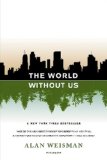Summary | Excerpt | Reviews | Beyond the Book | Readalikes | Genres & Themes | Author Bio

Thompson's team realized that slow mechanical action—waves
and tides that grind against shorelines, turning rocks into beaches—were now
doing the same to plastics. The largest, most conspicuous items bobbing in the
surf were slowly getting smaller. At the same time, there was no sign that any
of the plastic was biodegrading, even when reduced to tiny fragments.
"We imagined it was being ground down smaller and smaller,
into a kind of powder. And we realized that smaller and smaller could lead to
bigger and bigger problems."
He knew the terrible tales of sea otters choking on
polyethylene rings from beer six-packs; of swans and gulls strangled by nylon
nets and fishing lines; of a green sea turtle in Hawaii dead with a pocket comb,
a foot of nylon rope, and a toy truck wheel lodged in its gut. His personal
worst was a study on fulmar carcasses washed ashore on North Sea coastlines.
Ninety-five percent had plastic in their stomachs—an average of 44 pieces per
bird. A proportional amount in a human being would weigh nearly five pounds.
There was no way of knowing if the plastic had killed them,
although it was a safe bet that, in many, chunks of indigestible plastic had
blocked their intestines. Thompson reasoned that if larger plastic pieces were
breaking down into smaller particles, smaller organisms would likely be
consuming them. He devised an aquarium experiment, using bottom-feeding lugworms
that live on organic sediments, barnacles that filter organic matter suspended
in water, and sand fleas that eat beach detritus. In the experiment, plastic
particles and fibers were provided in proportionately bite-size quantities. Each
creature promptly ingested them.
When the particles lodged in their intestines, the
resulting constipation was terminal. If they were small enough, they passed
through the invertebrates' digestive tracts and emerged, seemingly harmlessly,
out the other end. Did that mean that plastics were so stable that they weren't
toxic? At what point would they start to naturally break down—and when they did,
would they release some fearful chemicals that would endanger organisms sometime
far in the future?
Richard Thompson didn't know. Nobody did, because plastics
haven't been around long enough for us to know how long they'll last or what
happens to them. His team had identified nine different kinds in the sea so far,
varieties of acrylic, nylon, polyester, polyethylene, polypropylene, and
polyvinyl chloride. All he knew was that soon everything alive would be eating
them.
"When they get as small as powder, even zooplankton will
swallow them."
Two sources of tiny plastic particles hadn't before
occurred to Thompson. Plastic bags clog everything from sewer drains to the
gullets of sea turtles who mistake them for jellyfish. Increasingly, purportedly
biodegradable versions were available. Thompson's team tried them. Most turned
out to be just a mixture of cellulose and polymers. After the cellulose starch
broke down, thousands of clear, nearly invisible plastic particles remained.
Some bags were advertised to degrade in compost piles as
heat generated by decaying organic garbage rises past 100°F. "Maybe they do. But
that doesn't happen on a beach, or in salt water." He'd learned that after they
tied plastic produce bags to moorings in Plymouth Harbor. "A year later you
could still carry groceries in them."
Even more exasperating was what his Ph.D. student Mark
Browne discovered while shopping in a pharmacy. Browne pulls open the top drawer
of a laboratory cabinet. Inside is a feminine cornucopia of beauty aids: shower
massage creams, body scrubs, and hand cleaners. Several are by boutique labels:
Neova Body Smoother, SkinCeuticals Body Polish, and DDF Strawberry Almond Body
Polish. Others are international name brands: Pond's Fresh Start, a tube of
Colgate Icy Blast toothpaste, Neutrogena, Clearasil. Some are available in the
United States, others only in the United Kingdom. But all have one thing in
common.
Copyright © 2007 by Alan Weisman. All rights reserved.






Your guide toexceptional books
BookBrowse seeks out and recommends the best in contemporary fiction and nonfiction—books that not only engage and entertain but also deepen our understanding of ourselves and the world around us.